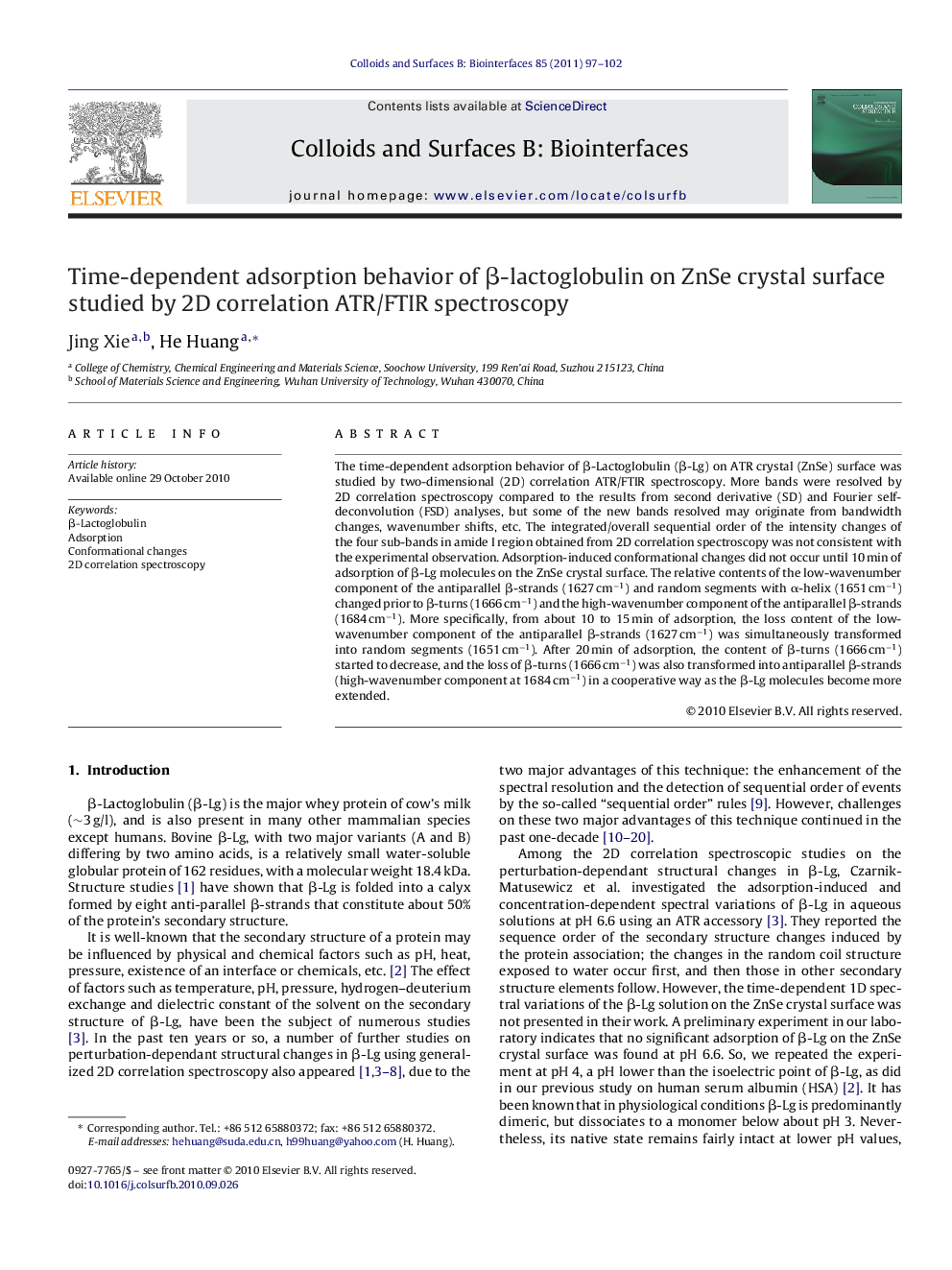| Article ID | Journal | Published Year | Pages | File Type |
|---|---|---|---|---|
| 600972 | Colloids and Surfaces B: Biointerfaces | 2011 | 6 Pages |
The time-dependent adsorption behavior of β-Lactoglobulin (β-Lg) on ATR crystal (ZnSe) surface was studied by two-dimensional (2D) correlation ATR/FTIR spectroscopy. More bands were resolved by 2D correlation spectroscopy compared to the results from second derivative (SD) and Fourier self-deconvolution (FSD) analyses, but some of the new bands resolved may originate from bandwidth changes, wavenumber shifts, etc. The integrated/overall sequential order of the intensity changes of the four sub-bands in amide I region obtained from 2D correlation spectroscopy was not consistent with the experimental observation. Adsorption-induced conformational changes did not occur until 10 min of adsorption of β-Lg molecules on the ZnSe crystal surface. The relative contents of the low-wavenumber component of the antiparallel β-strands (1627 cm−1) and random segments with α-helix (1651 cm−1) changed prior to β-turns (1666 cm−1) and the high-wavenumber component of the antiparallel β-strands (1684 cm−1). More specifically, from about 10 to 15 min of adsorption, the loss content of the low-wavenumber component of the antiparallel β-strands (1627 cm−1) was simultaneously transformed into random segments (1651 cm−1). After 20 min of adsorption, the content of β-turns (1666 cm−1) started to decrease, and the loss of β-turns (1666 cm−1) was also transformed into antiparallel β-strands (high-wavenumber component at 1684 cm−1) in a cooperative way as the β-Lg molecules become more extended.
